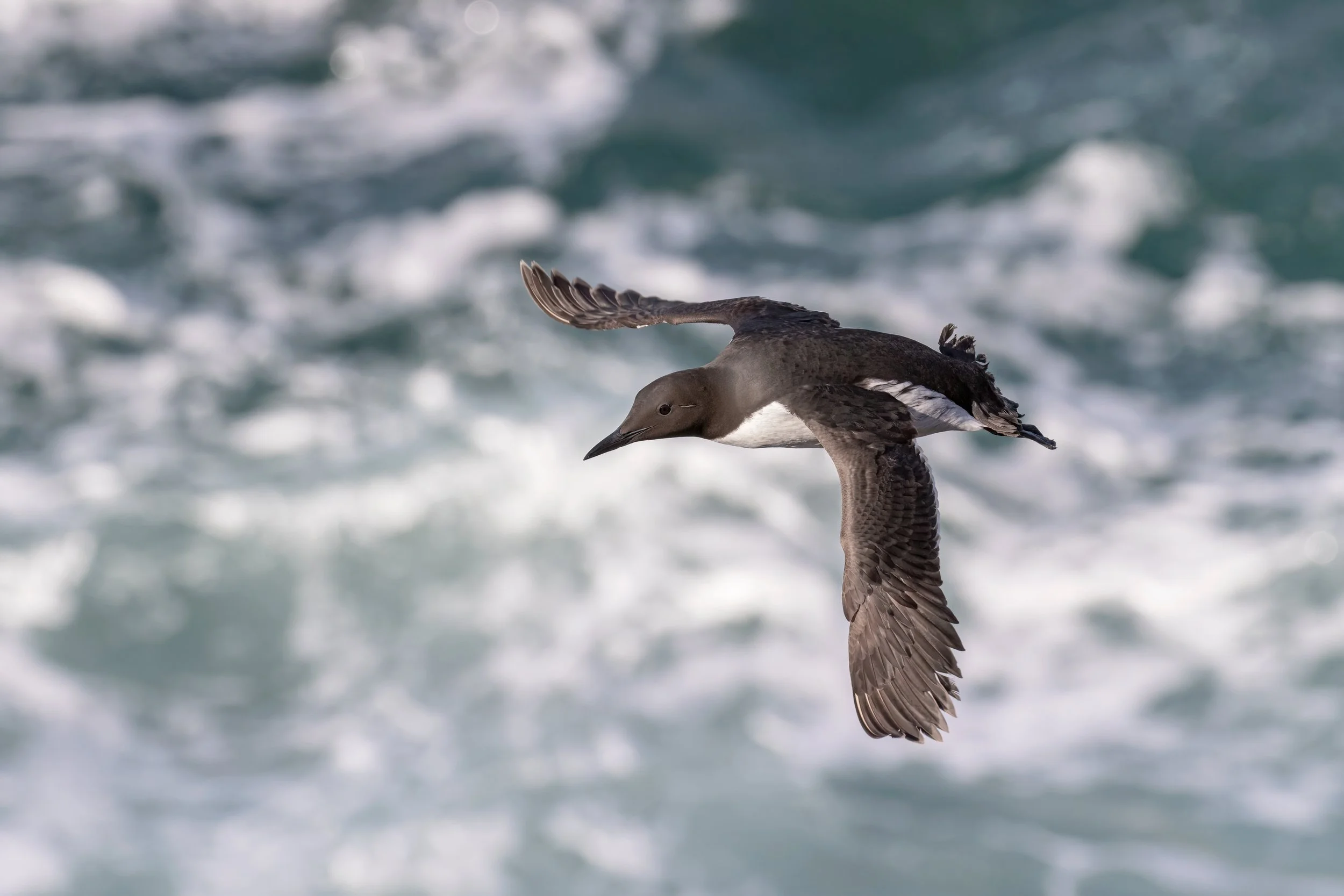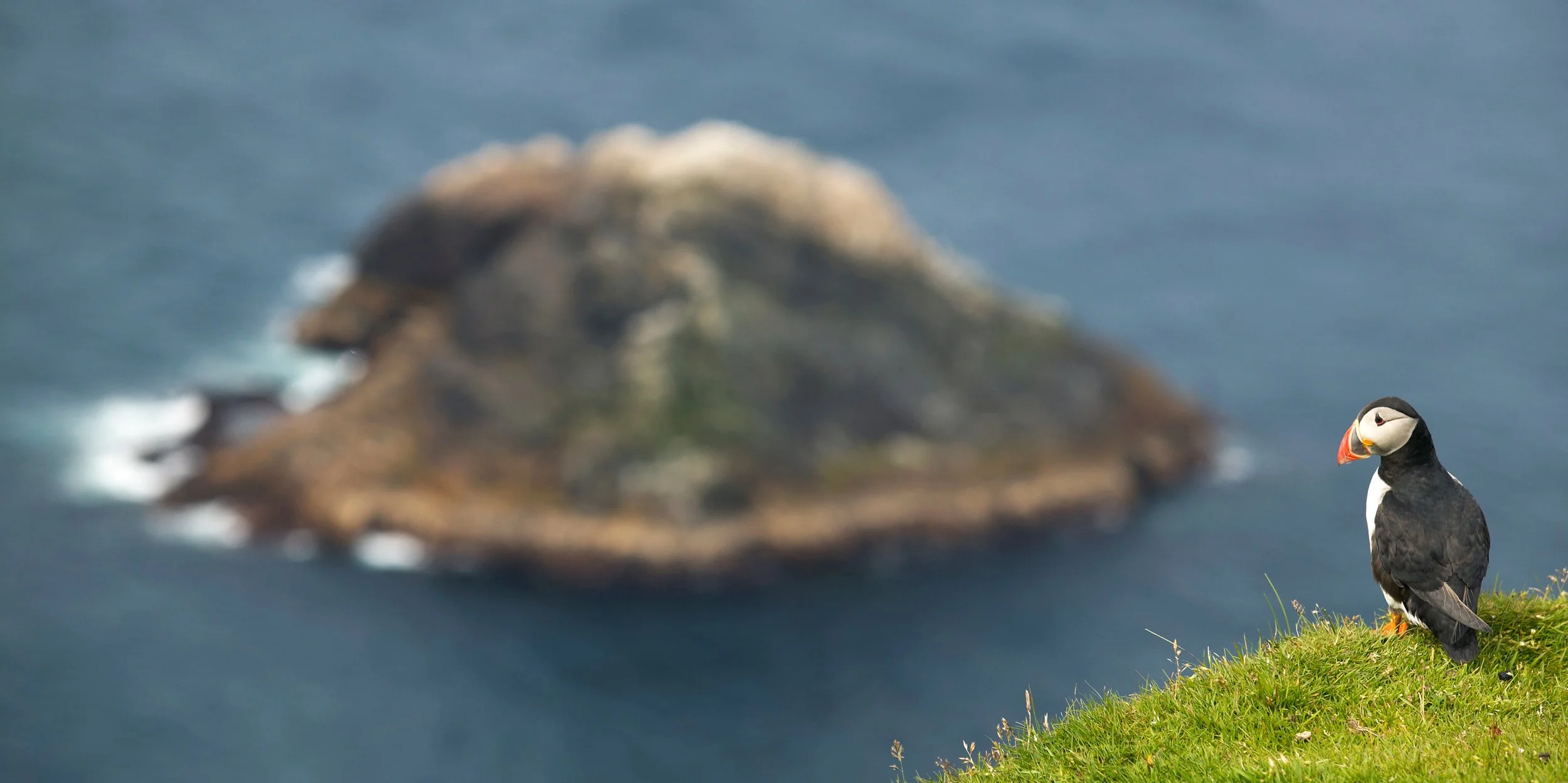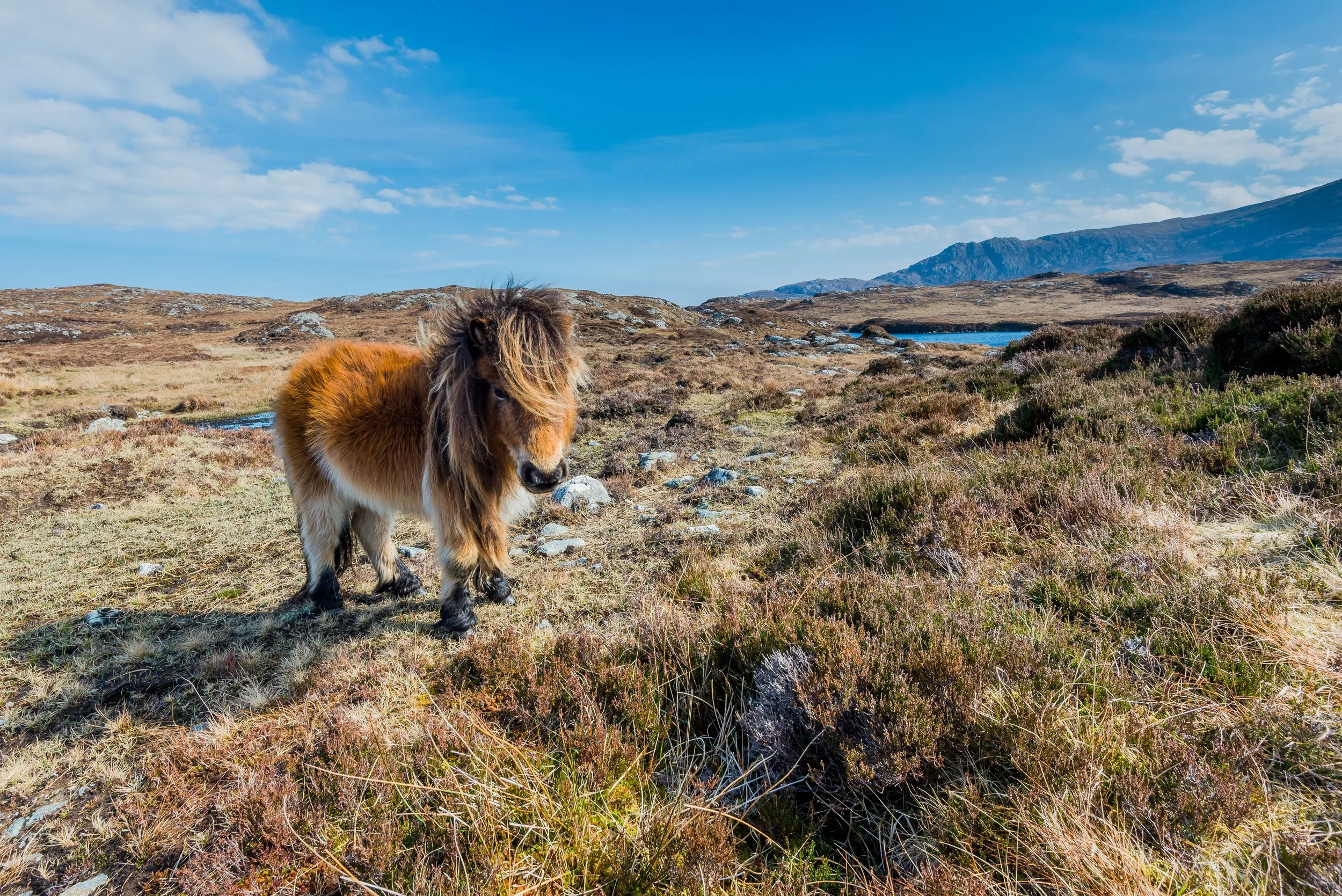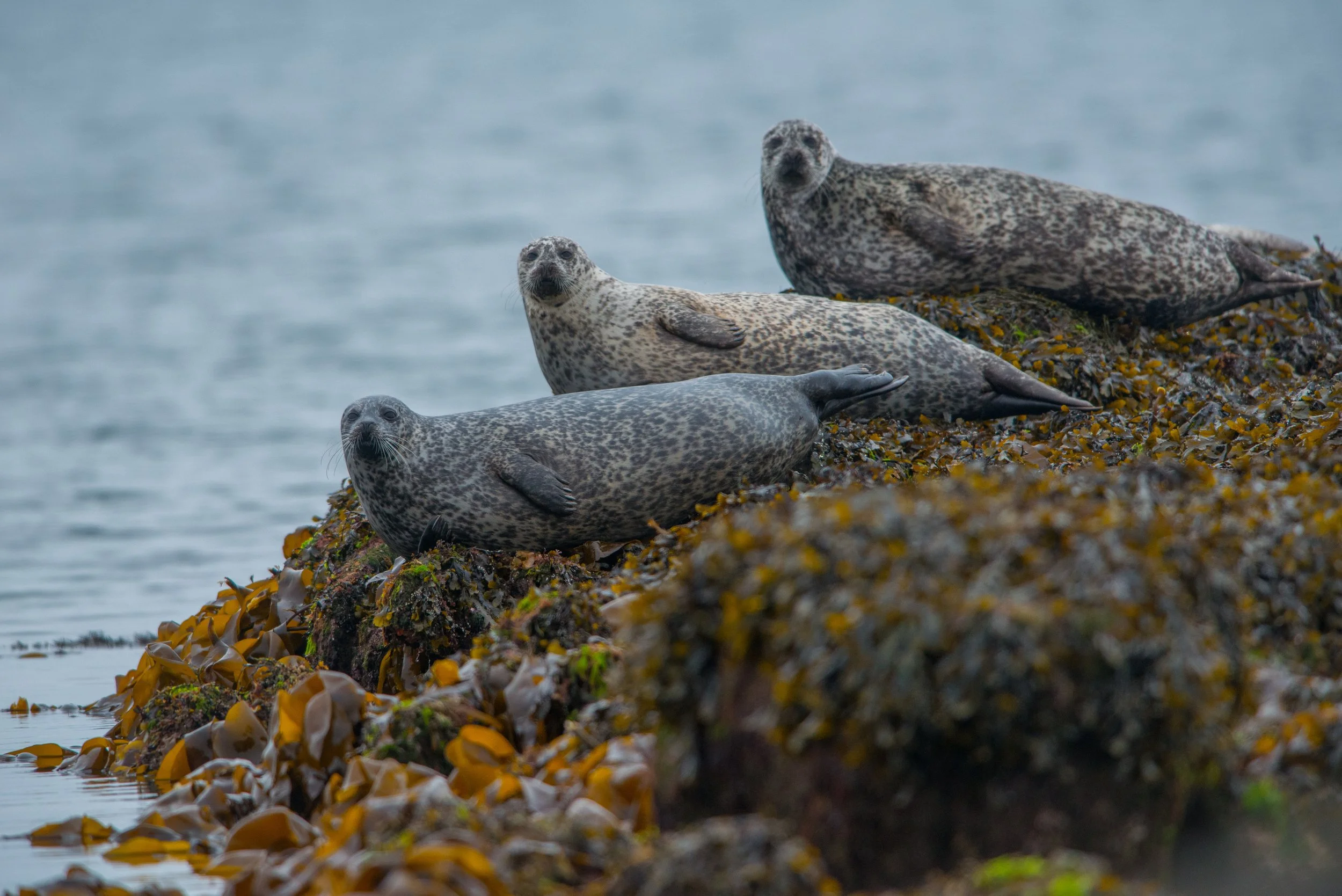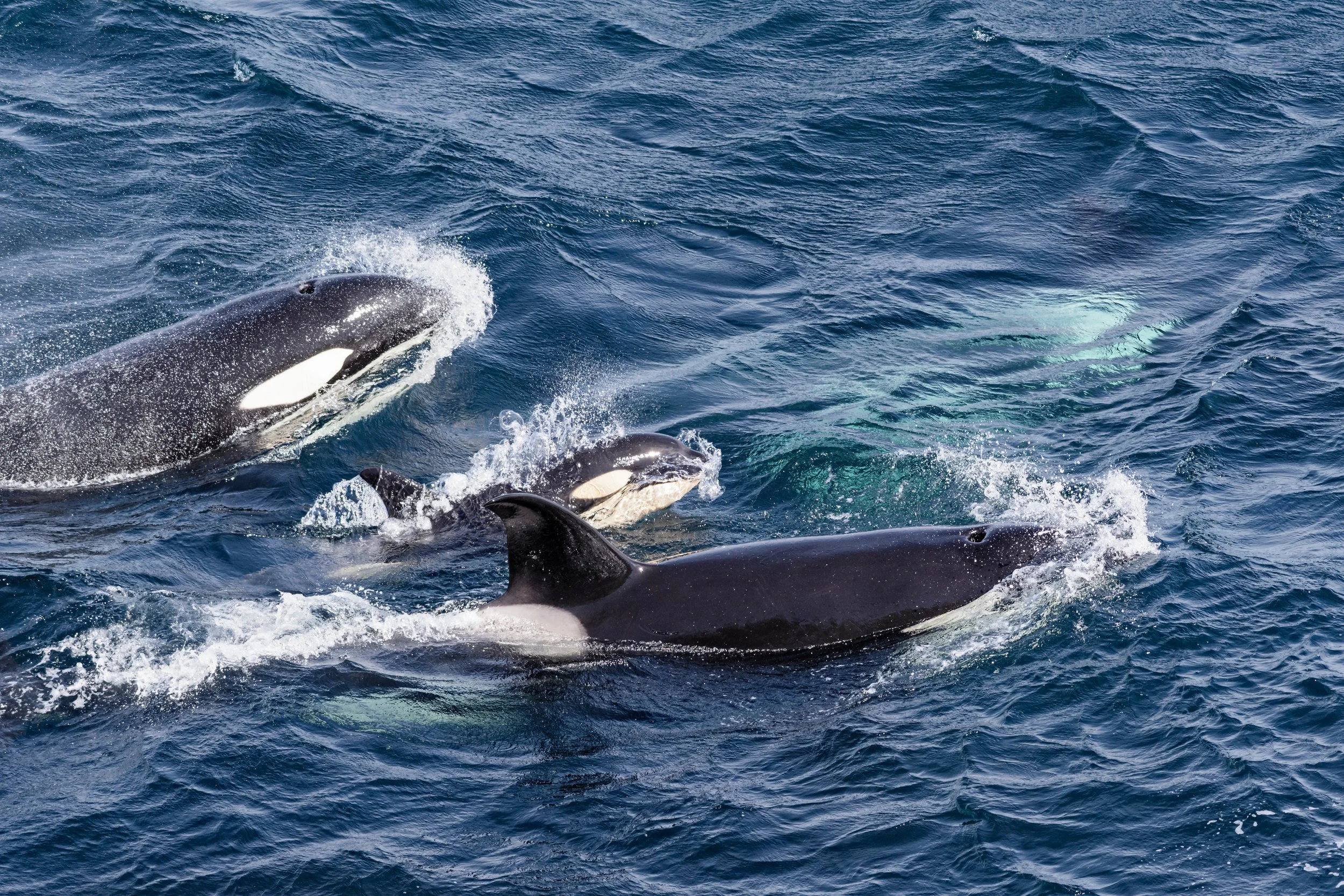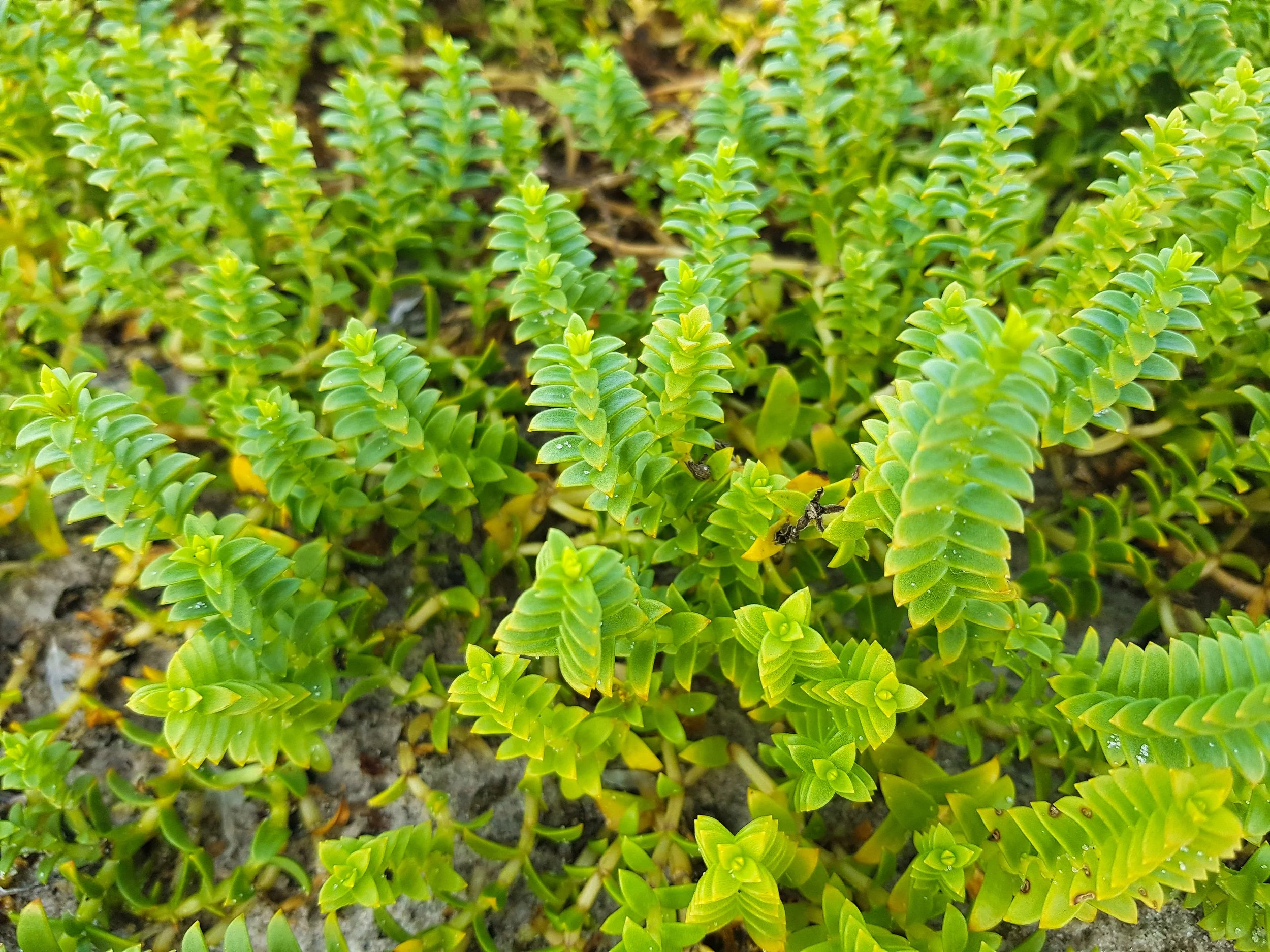Shetland Wildlife and Nature
The Shetland Islands archipelago is a hub for a diverse range of stunning landscapes, which is home to a wide array of fascinating wildlife and unique flora. The Shetland Islands’ isolated position in the north sea, rugged terrain, and harsh weather conditions have forced ecosystems to adapt in order to support animals and plants that are found nowhere else in the world. From seabirds to otters, here is an overview of some of the most interesting Shetland wildlife.
Birds
One of the most famous features of the Shetland Islands and a reason for a great many visitors is the array of seabirds that call the islands home, or at least for part of the year if they are migrating! The cliffs and rock formations provide ideal nesting sites for many species, including iconic puffins, guillemots, razorbills, and increasingly rare kittiwakes. Mainland is home to the largest colony of gannets in the world, and these birds put on quite a show for visitors to the island, diving from incredible heights into the sea to catch fish, creating a magnificent spectacle. The Sumbrugh cliffs are one of the best places to spot seabirds, with thousands of birds present during the breeding season. Additionally, the Sumbrugh Lighthouse Visitor Centre is a great source of information to help identify the birds that you see.
Noss National Nature Reserve is a simply unmissable spot just a short journey across the water from Lerwick. Tens of thousands of gannets, guillemots and fulmar can be found on the cliffs here, and it makes for an incredible sight.
The Fair Isle Bird Observatory was unfortunately the victim of a fire outbreak, and tragically burned down in 2019, but plans are underway for a replacement. Fair Isle has become a research hub for all things seabirds, with groundbreaking studies into migration and breeding. Check out the Fair Isle Bird Observatory website for updates on the rebuilding process, and for bird-related information and visitor tips.
Foula, which translates to ‘bird island’ in Old Norse, and this is absolutely fitting due to the number of birds that can be found here. Puffins, razorbills, shags, fulmars, and guillemots can be found in abundance, while dive-bombing skuas are amazing to watch from the cliffs.
Sticking slightly closer to dry land, Shetland is also home to a number of wading birds, including oystercatchers, curlews, and redshanks. These birds can often be found along the shorelines and in wetland areas, searching for food and breeding during the warmer summer months.
Mammals
Shetland is home to a variety of mammals, both on land and in the surrounding waters. One of the most enchanting is the otter, which can be found throughout the islands. These sleek, playful animals are excellent swimmers and can often be spotted fishing along the rocky coastline. However, they are not to be confused with sea otters, and they have to wash off every so often in fresh water to maintain their coats after exposure to saltwater. Shetland is home to around 1000 otters, making it one of the most populous areas for otters in Scotland and the whole of the UK.
Perhaps the most iconic animal found in the Shetland Islands is of course the Shetland pony. These hardy, miniature horses have lived on the islands for thousands of years and are a beloved symbol of Shetland. Visitors to the islands can often find these horses grazing in fields and along the roadsides. While they seem to roam freely, Shetland ponies are in fact all owned and cared for by locals.
Marine mammals are extremely prevalent around Shetland, with seals, whales, and dolphins often spotted around the coast. Grey and common Seals are regularly seen around the islands, and these inquisitive creatures are found basking on the rocks or bobbing around in the water, with grey seals typically being the larger of the species. Lerwick harbour is a hotspot for seals and it is definitely worth making a trip to see some of these curious animals.
Orcas and white-sided dolphins can occasionally be seen hunting around Shetland during the summer months, a truly special sight and a real privilege to witness these apex predators in UK waters. Shetland is one of the best places to try and spot dolphins in Scotland. Minke whales, pilot whales, sperm whales, and even the occasional basking shark can also be seen around Shetland, but they are few and far between, so count yourself lucky if you do see one! In the later summer months, porpoises can regularly be spotted around Mousa Sound, either hunting for fish or cruising through the water in groups.
Plants
There is a remarkable range of plant life on the islands, all of which are adapted well to the variable conditions of the region, able to manage cold, wet and windy weather. The flora is rich and varied, with over 500 species of flowering plants, ferns and mosses.
On the beaches, you may find sea mayweed, sea rocket, or the unusual-looking sea sandwort. These plants are adapted to the extremely high winds and lack of nutrients by the sea, and are often seen gripping onto rocks or cliffsides or simply sprouting from the sand.
Inland, one of the most common plant species found in Shetland is heather, covering large areas of the islands in a blanket of pink and purple flowers. Heather is very hardy and provides an important food source for animals on the islands. Bog cotton is also prevalent on the islands, a fluffy white plant found in the wetlands. The cotton-like flowers are actually the seedheads, which distribute the seeds in the wind. A range of ferns can be found on the islands, which thrive in damp and shady conditions and can survive in rocky crags and crevices, making them perfectly suited to Shetland’s landscape.
In addition to the more common plant species, the Shetland Islands are home to a range of rare and unique plants that are found nowhere else in the world. One of these unique plants is the Shetland mouse-ear, a small plant with delicate flowers only found on Unst, and can be seen growing in rocky areas exposed to the elements.
The plants in Shetland contribute to an incredibly rich ecosystem which is a testament to the resilience and adaptability of nature even in the harshest environments.
Shetland.org has a very useful and informative page detailing even more plants that can be found in different areas of the islands.
How do you get to the Shetland Islands?
The most common ways to travel to the islands are either arriving by ferry or by getting flights to Shetland. At Airtask, we offer Shetland inter-island flights, operating passenger services between Lerwick, departing from Tingwall Airport, to both Foula and Fair Isle. For more information and flight scheduling, please click here.

